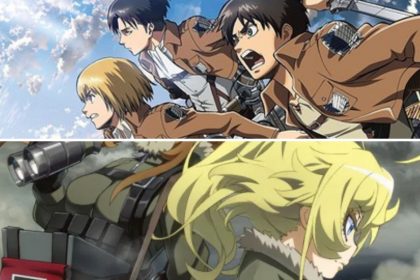The world of anime and manga is not only characterized by captivating stories and memorable characters. Anime culture also characterized by the passionate and creative fandoms they inspire. One prominent way fans express their love and devotion for these mediums is through fanart. Fanart serves as a powerful form of creative expression, allowing fans to showcase their artistic skills.
Through fanart, fans can connect with the source material, build community, and pay tribute to beloved characters and series. In this article, we will explore the significant role fanart plays in the anime and manga fandom. Also, we explore its impact on the industry, and the controversies it sometimes entails.
What is Fanart?
Fanart refers to artwork created by fans that depicts characters, scenes, or concepts from anime and manga. It can take various forms, including traditional and digital illustrations, paintings, sculptures, cosplay, and even fan-made animations.
Fanart is a unique blend of creativity and admiration. With fanart, fans use their artistic abilities to reinterpret and reimagine the characters and worlds they adore. It serves as a visual celebration of the source material, allowing fans to express their emotional connection and showcase their talent to a wider audience.
The Creative Expression of Fans
Fanart as an Outlet for Creativity
For many fans, creating art is a way to unleash their creativity and explore their artistic potential. It provides an avenue to experiment with different styles, techniques, and mediums, allowing artists to develop their skills in a supportive environment.
Fanart encourages artists to think critically about character design, composition, and storytelling, honing their abilities while simultaneously expressing their love for the anime and manga they cherish. It serves as a canvas for self-expression, enabling fans to infuse their unique perspectives and interpretations into the artwork.
Connecting with the Source Material
Fanart acts as a bridge between fans and the source material, deepening their connection and understanding of the characters and stories. Through the process of creating art, fans spend significant time observing and analyzing the details of the original artwork, gaining a deeper appreciation for the creative choices made by the original creators.
This intimate familiarity allows fans to capture the essence and personality of the characters in their own artwork, often adding new layers of depth and emotion. This kind of art also becomes a visual dialogue between artists and the source material, creating a symbiotic relationship that fuels the fandom’s enthusiasm.
Further Readings: Role of Fan Merchandise in Otaku Culture
Building Community and Fostering Engagement
Sharing and Appreciating Fanmade art
One of the remarkable aspects of fanart is its ability to bring fans together and foster a sense of community. Artists eagerly share their creations with fellow fans, whether it’s through social media platforms, dedicated fanmade art websites, or conventions. This act of sharing not only allows artists to showcase their work but also encourages interaction and engagement among fans. The vibrant discussions, compliments, and constructive feedback that arise from sharing fanmade art create a supportive and encouraging environment for artists to grow and improve. It becomes a shared experience where fans can bond over their mutual love for specific characters or series, strengthening the sense of belonging within the anime and manga fandom.
Collaborative Projects and Challenges
Fanart has the power to unite artists in collaborative projects and challenges. Artists often come together to create group art pieces, where each participant contributes a specific character or element to form a cohesive artwork. These collaborations enable artists to learn from one another, exchange ideas, and push their creative boundaries. Additionally, fanart challenges, such as “inktober” or character design contests, provide artists with prompts and themes to inspire their artwork. These challenges not only encourage artists to produce new pieces but also allow fans to discover and appreciate the diverse interpretations and styles of different artists within the community.
Fanart as a Form of Tribute and Appreciation
Paying Homage to Beloved Characters and Series
Fanart serves as a heartfelt tribute to the characters and series that have captured the hearts of fans. Artists pour their love and admiration into their artwork, meticulously recreating iconic moments, capturing the essence of beloved characters, or even imagining new scenarios within the established universe. Fanart immortalizes these characters and allows fans to express their gratitude for the impact they’ve had on their lives. It becomes a visual love letter, conveying the emotions and connections fans have formed with these fictional creations.
Capturing Emotions and Moments
Fanart has the power to evoke emotions and capture fleeting moments that resonate deeply with fans. Artists skillfully depict the expressions, body language, and interactions of characters. Fanartist can also bringing their art to life in ways that resonate with viewers. Through fanart, fans can relive their favorite scenes, experience the intensity of a character’s emotions, or simply appreciate the beauty and aesthetics of the artistry. It becomes a medium through which fans can revisit cherished moments and immerse themselves in the world of anime and manga.
Influencing the Industry and Promoting New Content
Impact on Anime and Manga Popularity
Fanart plays a significant role in popularizing anime and manga by generating buzz and attracting a wider audience. When fans create and share captivating fanart, it spreads across social media platforms. These arts can also reach individuals who may not have been previously exposed to the series. The visually appealing nature of fanart acts as a gateway, piquing curiosity and enticing newcomers to explore the source material. In this way, fanart acts as a powerful promotional tool, amplifying the reach and impact of anime and manga beyond the existing fandom.
Fanart as a Catalyst for Official Merchandise
The influence of fanart extends beyond promotion and can directly impact the industry by inspiring official merchandise. When fanart gains significant popularity and captures the attention of both fans and creators, it can lead to collaborations and licensing agreements. Artists may be approached to contribute designs for official merchandise, such as posters, artbooks, apparel, or even collectible figures. This symbiotic relationship between fanart and the industry not only provides artists with opportunities for recognition and financial gain. This relationship also allows fans to own tangible representations of their favorite artworks and support their favorite artists.
The Controversies Surrounding Fanart
Copyright and Intellectual Property Issues of Fanart
Fanart exists in a legal gray area, as it involves creating derivative works based on copyrighted material. While fanart is generally tolerated and even celebrated by creators and publishers, it technically infringes upon intellectual property rights. However, many creators and publishers understand the positive impact fanart has on the fandom. Some even choose not to pursue legal action. Nevertheless, it is important for artists to be aware of copyright laws and respect the boundaries set by the original creators.
Balancing Artistic Freedom and Respect for Creators
The creation of fanart raises questions about the balance between artistic freedom and respect for creators. While fanart allows artists to express their creativity, it is essential to acknowledge and appreciate the original creators’ vision and efforts. Artists should strive to maintain a level of integrity and avoid distorting or misrepresenting the characters and stories they draw inspiration from. Respecting the boundaries set by the original creators ensures that fanart remains a form of homage rather than a means of disrespect or misappropriation.
Conclusion
Fanart serves as a vibrant and integral part of the anime and manga fandom, allowing fans to express their creativity, connect with the source material, and build a sense of community. It plays a pivotal role in promoting and popularizing anime and manga, while also serving as a tribute to beloved characters and series. Despite the legal complexities and controversies surrounding fanmade art, it continues to thrive as a form of artistic expression that captivates both fans and creators alike. Through fanart, the fandom’s passion and creativity shine, leaving an indelible mark on the world of anime and manga.













